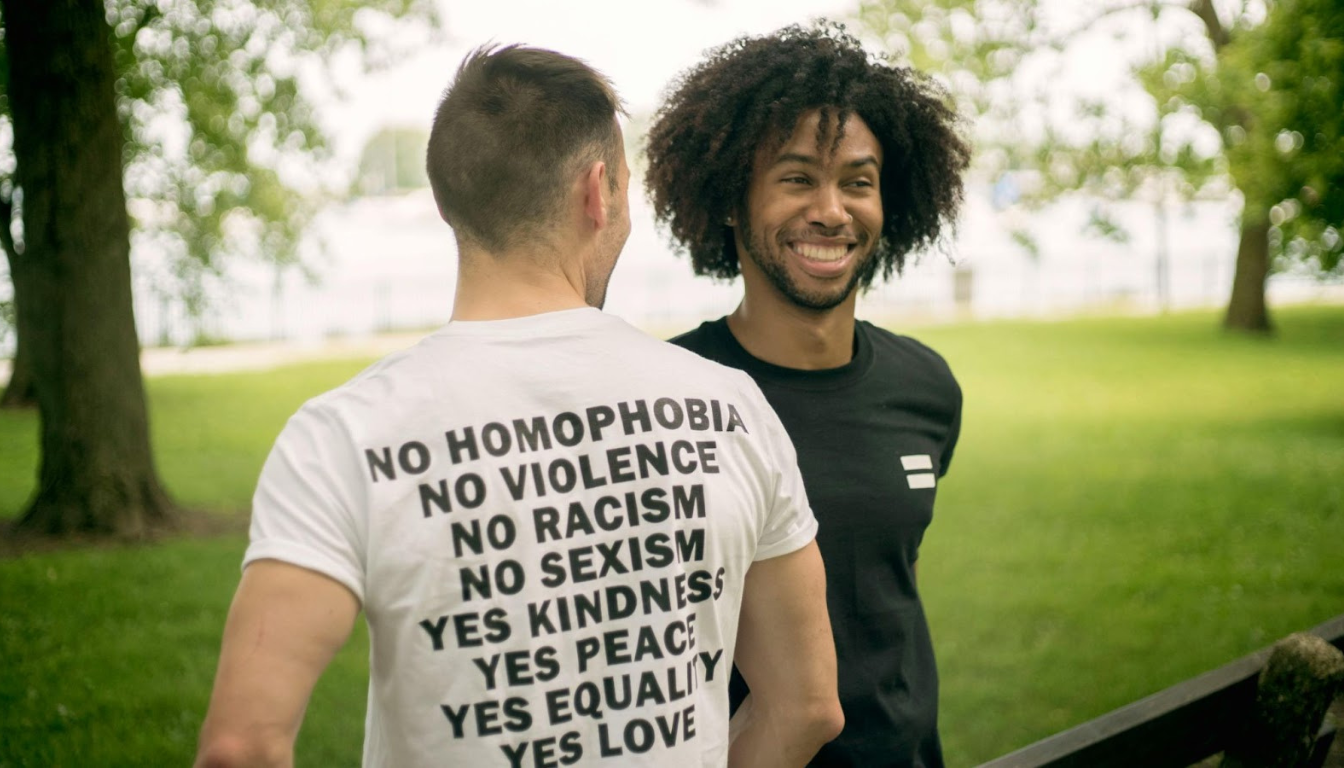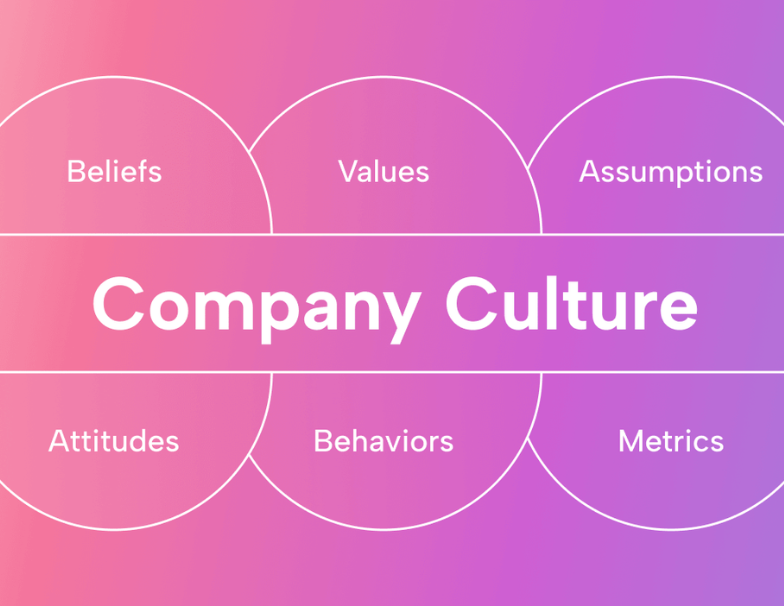Best Practices for Managing Culture and Language in International Retreats

Planning an international retreat involves navigating cultural and linguistic differences to ensure a smooth and productive experience. This article offers best practices for managing culture and language in international retreats. You’ll learn how to understand cultural differences, address language barriers, plan inclusive activities, and lead diverse teams effectively.
Key Takeaways
- Understanding and integrating cultural differences is essential for enhancing communication and collaboration during international retreats.
- Addressing language barriers through effective tools and practices, such as hiring interpreters and using plain language, is crucial for clear communication among diverse teams.
- Planning inclusive activities and utilizing expert support for logistics can create memorable experiences that foster teamwork and a positive work environment.
Understanding Cultural Differences

Recognizing cultural differences is crucial for improving communication and fostering innovation in international retreats. Cultural nuances can significantly affect interpersonal behavior, leading to misunderstandings and impacting overall teamwork. To manage cultural diversity effectively, organizations must focus on maximizing communication skills and collaboration among team members.
Understanding cultural differences isn’t just about acknowledging them; it’s about integrating this understanding into every aspect of your retreat, especially when dealing with complex ideas in a world context. This involves researching cultural backgrounds and cultural background, utilizing models like Hofstede’s Cultural Dimensions, and implementing comprehensive cultural awareness training.
This approach fosters an environment where diverse perspectives are celebrated, enhancing team cohesion and innovation, bringing together individuals from diverse backgrounds.
Research Cultural Backgrounds
Incorporating team members’ cultural backgrounds into retreat activities enhances engagement and participation. Key considerations include:
- Thoroughly researching team members’ cultural backgrounds to promote better understanding and collaboration.
- Recognizing individual characteristics to avoid stereotypes when assessing cultural factors.
- Understanding that not everyone will conform to the same expectations as their peers, which is vital for effective cultural assessment.
Cultural exchange initiatives empower employees to showcase their traditions, which enhances mutual understanding and respect. Tailoring activities to the diverse cultural backgrounds within your team makes the retreat more inclusive and engaging.
Hofstede's Cultural Dimensions
Geert Hofstede’s cultural dimension model is a valuable tool for understanding cultural differences among international teams. Hofstede’s model outlines six dimensions that illustrate how national cultures differ in values. Understanding these cultural dimensions can help prepare organizations for potential cultural clashes or misunderstandings during international retreats.
Applying Hofstede’s model helps anticipate areas where cultural differences might impact communication and collaboration. This proactive approach allows you to address potential issues before they arise, ensuring a smoother and more productive retreat experience for all participants.
Cultural Awareness Training
Comprehensive training in diversity and inclusion is vital for fostering an empathetic workplace. Pooja Kothari offers tailored workshops that include:
- Exploring identity, language, and bias
- Discussing white supremacy characteristics to provide a channel for all employees to share and discuss feelings about privilege
- Exploring Tema Okun’s white supremacy checklist to deepen understanding of workplace culture
Cultural awareness training fosters a more inclusive environment where all team members feel valued and understood. Such training can address underlying biases and foster a culture of empathy, ultimately leading to a more cohesive and collaborative team dynamic.
Addressing Language Barriers

Language barriers are linguistic limitations that cause confusion or hinder understanding. These barriers can lead to miscommunication, impacting team collaboration and overall productivity. To overcome language barriers, it’s essential to use translation tools, hire interpreters, and encourage plain language. Effective communication can be enhanced by developing targeted strategies based on identified language challenges.
Effectively managing language barriers ensures clear communication and agreement within the team. Addressing these barriers head-on creates an environment where everyone feels heard, enhancing collaboration and smoothing the retreat experience.
Use Translation Tools
Translation tools play a crucial role in facilitating communication during international retreats. Utilizing reliable translation tools ensures that all participants have a clear understanding of communication. Different usages in different cultures can affect the meaning of words in translation. Always leverage reliable translation tools to bridge language gaps and enhance collaborative efforts during retreats.
Translation tools minimize misunderstandings and ensure everyone is on the same page. This is particularly important in a cross-cultural team where language training differences can make all the difference and easily lead to confusion and miscommunication.
Hire Interpreters
Employing bilingual staff can facilitate smoother interactions between teams from different linguistic backgrounds. Bridging language gaps is crucial in international retreats to ensure effective communication and collaboration. Professional interpreters play a vital role in facilitating clear communication across different languages during events. Ensuring effective communication through interpreters and bilingual staff enhances team cohesion and contributes to the overall success of the retreat.
Hiring interpreters ensures that all team members can participate fully in discussions and activities, regardless of their language proficiency. This not only enhances communication but also fosters a more inclusive and collaborative environment.
Encourage Plain Language
To ensure effective communication in cross-cultural teams, consider the following practices:
- Utilize clear and simple language to help prevent misunderstandings across diverse teams.
- Use plain language as a recommended practice for enhancing communication when language differences exist.
- Confirm understanding by asking the other party to rephrase the information as a technique for checking comprehension.
By encouraging the use of plain language, you can significantly reduce the chances of miscommunication. This practice ensures that all team members, regardless of their language skills, can understand and contribute effectively to discussions and activities.
Planning Inclusive Activities

Memorable experiences can enhance teamwork and collaboration among international teams, fostering a sense of belonging. Ways to enhance team cohesion and collaboration include:
- Organizing inclusive activities to foster collaboration across diverse cultural backgrounds.
- Demonstrating cultural sensitivity to significantly enhance team cohesion and trust.
- Selecting venues that are fully furnished to ensure comfort and convenience for diverse teams.
By planning activities that cater to the diverse needs of your team, you can create a more inclusive and engaging retreat experience. This involves selecting well-equipped venues and organizing activities that resonate with the different cultural backgrounds of your team members.
Team-Building Exercises
Selecting activities that resonate with various cultural backgrounds can enhance team bonding and engagement. Activities designed to align with the diverse cultural interests of participants can significantly improve engagement. To promote understanding and appreciation among departments, exercises like the Jigsaw exercise can be utilized.
Choosing team-building exercises that reflect diverse interests fosters a more inclusive and engaging environment. These activities help build stronger bonds and improve overall team dynamics.
Cultural Exchange Programs
A recommended exercise to promote cultural sharing among team members is a show and tell activity. Items or experiences meaningful to employees should be included in a show and tell activity. Customizing activities to include local traditions can foster a sense of belonging among team members.
Cultural exchange programs provide an opportunity for team members to share their customs and traditions from their country, fostering mutual respect and understanding. These programs can be a valuable addition to your retreat, promoting a sense of unity and belonging among participants.
Visual Aids and Body Language
Visual aids such as slides, charts, and diagrams can significantly enhance participants’ understanding by presenting information in a clear and engaging manner. Using colors and images in visual aids can improve retention and make learning more effective during presentations. Incorporating videos and infographics can provide different ways to convey information, catering to different learning styles. Body language plays a crucial role in communication; it can convey confidence, openness, and engagement, or alternatively, disinterest and confusion.
Incorporating visual aids and being mindful of body language enhances communication and understanding among participants. This approach caters to different learning styles and ensures that all team members can engage effectively with the content being presented.
Effective Leadership in Diverse Teams

Strong leadership in diverse teams promotes:
- Inclusivity and leverages the strengths of varied cultural perspectives.
- Diverse communication approaches that can significantly enhance team productivity and performance.
- A culture where team members can express ideas openly, fostering trust and innovation.
- An atmosphere of open dialogue that promotes trust and encourages team members to share their thoughts without fear.
Effective leadership is key to managing diverse teams successfully. Promoting inclusivity, fostering open dialogue, and leveraging diverse perspectives create a more productive and innovative team environment that attracts top talent.
Lead by Example
Effective leadership in diverse teams is crucial to fostering an inclusive environment that respects and understands cultural differences. Active listening enables leaders to grasp the nuances of their team members’ perspectives, leading to better communication and collaboration. Implementing conflict resolution strategies that acknowledge and address cultural differences promotes open dialogue and understanding among team members.
Leaders who lead by example set the tone for the entire team. Demonstrating active listening and effective conflict resolution fosters a more inclusive and collaborative environment where all team members feel valued in their leadership roles.
Active Listening
Leaders should:
- Create a safe environment for team members to express their thoughts and challenges related to language.
- Engage in cultural sharing through structured programs to foster deeper interpersonal connections among team members.
- Practice active listening to understand diverse perspectives and concerns within the team.
Practicing active listening enhances team dynamics and promotes collaboration across cultural boundaries.
Active listening is an essential skill for leaders managing diverse teams. By creating a safe environment for expression and engaging in cultural sharing, leaders can enhance team dynamics and promote better collaboration.
Conflict Resolution
Incorporating cultural awareness into conflict resolution helps in addressing misunderstandings effectively. Addressing misunderstandings through open dialogue and problem solving abilities promotes a more harmonious team environment. Conflict resolution is a critical aspect of leadership in diverse teams.
By incorporating cultural awareness into conflict resolution strategies, leaders can address misunderstandings more effectively and foster a more harmonious and collaborative team environment.
Enhancing Communication Styles

A supportive atmosphere enhances communication, making it easier for team members to share ideas openly. Leaders should:
- Encourage open dialogue to facilitate communication regarding language barriers.
- Practice active listening to understand team members’ concerns about language barriers.
- Understand differences in verbal and nonverbal communication along with background information, which is critical for accommodating diverse team members.
Prioritizing clear and concise communication while avoiding jargon and using appropriate visual aids enhances comprehension among team members with different language proficiencies. Being attentive to body language can help in interpreting non-verbal cues, enhancing communication effectiveness in diverse groups. Using visuals and diagrams is an effective way to explain complicated concepts.
Overcommunicate
Overcommunication is crucial to avoid misunderstandings due to different cultural backgrounds. Team members should adopt patience and courtesy when communicating in a cross-cultural environment. When using written communications such as email or chat apps, it’s helpful to attach resources to explain initiatives.
Overcommunicating ensures that important information is clearly conveyed and understood by all team members. This practice helps prevent miscommunications and ensures that everyone is on the same page, leading to more effective collaboration.
Regular Check-Ins
Conducting regular check-ins offers several benefits:
- Allows for timely identification and resolution of language-related challenges.
- Significantly enhances team cohesion.
- Creates a supportive environment where team members can express their language-related struggles without fear.
Establishing a culture of regular check-ins promotes ongoing communication and helps team members feel valued. This practice ensures that any issues are addressed promptly, leading to a more cohesive and productive team.
Encourage Open Dialogue
Fostering an environment of open dialogue is crucial for enhancing creativity within diverse teams. Effective communication and idea sharing contribute significantly to a diverse workforce’s creativity and can lead to creative solutions. Encouraging team members to independently seek information can be supported by creating a database of company resources.
An environment that promotes sharing thoughts and feedback openly leads to higher engagement and innovation. By encouraging open dialogue, you create a more dynamic and collaborative team environment.
Utilizing Offsite Services
Partnering with Offsite offers several advantages for companies planning corporate retreats international:
- Integrates expert planning and logistics, enhancing the overall experience.
- Supports international corporate retreat planning by helping navigate cross-cultural team building.
- Addresses language barriers in the workplace.
- Streamlines the logistics of planning corporate retreats, enabling companies to focus on team building and cultural exchange.
Offsite collaborates with numerous premier venues worldwide, providing vetted options that cater to diverse corporate retreat needs. Partnering with Offsite enhances the planning process for corporate retreats, simplifying logistics for international teams.
Seamless Booking Experience
Offsite offers:
- A user-friendly booking process
- Connection to a curated list of venues and vendors worldwide
- A streamlined booking system linking clients with pre-vetted venues and service providers globally
- Quick submission of booking requests
- Receipt of detailed proposals within 48 hours
By streamlining the booking process, Offsite ensures that teams can focus on the retreat itself rather than logistical details. This seamless experience helps create unforgettable experiences for all participants.
Cost Savings
Companies can achieve significant savings by utilizing Offsite’s pre-negotiated rates, including:
- Up to 50% savings on accommodations
- Up to 50% savings on meeting spaces
- Savings on various corporate retreat expenses through Offsite’s extensive vendor network
These cost savings allow companies to allocate resources to other departments and other important aspects of the retreat, enhancing the overall experience and success of the event.
Expert Planning Support
Offsite offers dedicated planning support to ensure that corporate retreats are executed smoothly and without stress. Offsite guarantees hassle-free corporate retreats, allowing users to book in minutes and secure contracts in a week. Offsite provides dedicated planning support to ensure a smooth and inclusive experience throughout the retreat process.
With expert planning support, companies can focus on the business content and objectives of the company retreat, confident that all logistical details are handled professionally.
Creating Unforgettable Experiences
Evaluating the success of international retreats can help identify both effective strategies and areas needing improvement. Offsite creates inclusive experiences for global teams. Focus on organizing activities that promote inclusion and foster strong relationships among team members from different cultural backgrounds. Plan team-building exercises that encourage collaboration and understanding among diverse team members.
Choosing fully furnished venues can significantly enhance participant comfort, as all essential amenities are readily available. Offsite provides a seamless booking experience with curated venues and vendors globally, simplifying venue selection for organizers.
Creating a positive work environment enhances collaboration and employee well-being. Encouraging collaboration and support within a positive work environment is crucial for a successful retreat experience.
Tailored Retreat Activities
Focus on organizing activities that promote inclusion and foster strong relationships among team members from different cultural backgrounds. Plan team-building exercises that encourage collaboration and understanding among diverse team members. Organize cultural exchange programs where employees can share their customs, traditions, and experiences within the organization.
Use visual aids and be mindful of body language to enhance understanding and engagement during activities. Tailored activities ensure that all participants feel included and valued, leading to a more successful and memorable retreat.
Fully Furnished Venues
Choosing fully furnished venues can significantly enhance participant comfort, as all essential amenities are readily available. Offsite provides a seamless booking experience with curated venues and vendors globally, simplifying venue selection for organizers. Utilizing Offsite can lead to potential cost savings of up to 50% on room blocks, meeting spaces, and other budget items to support diverse team needs.
Expert planning support offered by Offsite ensures that retreats are planned hassle-free and inclusively, catering to a diverse audience. Fully furnished venues contribute to a more comfortable and productive retreat experience.
Positive Work Environment
Strong cross-cultural teams lead to a positive work environment, fostering trust and a sense of value in employees. Creating a positive work environment enhances collaboration and employee well-being. Benefits of a positive work environment include improved trust, engagement, and overall employee satisfaction.
Encouraging collaboration and support within a positive work environment is crucial for a successful retreat experience. A positive work environment ensures that all team members and co workers feel valued and motivated, leading to better overall performance.
Measuring Success
Evaluating success at international retreats involves collecting data that informs future improvements. Measuring success in international retreats is crucial for identifying strengths and areas for improvement. Implementing insights gained from feedback can enhance the effectiveness and impact of future retreats.
Measuring success identifies what worked well and what needs improvement, ensuring that future retreats are more effective and impactful.
Feedback Surveys
Analyzing feedback and participation data after the retreat can reveal which aspects were successful and which need adjustment. Key steps include:
- Collecting feedback from participants through surveys to evaluate the retreat’s effectiveness.
- Implementing a follow-up process to track long-term impacts.
- Refining future retreats based on participant feedback.
Utilizing participant feedback to continually improve the retreat experience fosters engagement and satisfaction among team members. Feedback surveys provide valuable insights that can guide necessary improvements for future events.
Post-Retreat Analysis
Conducting a post-event analysis is essential to understand what worked and what didn’t during the event. Collect feedback from participants through surveys to assess the effectiveness of the retreat. Implement continuous improvement strategies based on feedback and analysis to enhance future retreats.
Analyzing participant feedback allows for targeted enhancements in retreat planning and execution. Post-retreat analysis ensures that future retreats are even more effective and impactful.
Continuous Improvement
Collecting feedback from participants through surveys is essential to assess the effectiveness of the retreat. Feedback surveys help identify strengths and weaknesses in the retreat structure and content, guiding necessary improvements for future events. Conducting a post-retreat analysis allows organizations to evaluate what worked well and to pinpoint areas that require enhancement.
Using the insights gained from feedback and post-retreat analysis fosters a culture of continuous improvement in planning future retreats. Continuous improvement ensures that each retreat builds on the success of the previous one.
Summary
Successfully managing culture and language in international retreats requires thoughtful planning and awareness of cultural nuances and linguistic barriers. By understanding and respecting cultural differences, addressing language barriers, planning inclusive activities, and enhancing communication styles, you can create a more cohesive and productive team environment. Effective leadership and leveraging services like Offsite can further enhance the retreat experience, ensuring that all participants feel valued and engaged.
As you embark on planning your next international retreat, remember that fostering a positive work environment and continuously measuring success are key to achieving long-term goals. Implement these best practices, and you’ll create unforgettable experiences that leave a lasting impact on your team. The journey towards better workplace diversity and communication begins with small, actionable steps. Start today, and watch your team thrive!
FAQs
- Why is budgeting important for a corporate retreat?
It helps allocate funds effectively, prevents overspending, and ensures the retreat meets both financial and organizational goals.
- What should be included in a retreat budget?
Budgets should cover fixed costs like venue rental and transportation, variable costs like catering and activities, and a contingency fund for unexpected expenses.
- How can we reduce retreat expenses without sacrificing quality?
Set clear priorities, compare vendor quotes, negotiate rates, and track all expenses throughout the planning process.
- What is a contingency budget and why is it necessary?
It’s an allocated amount for unforeseen costs such as last-minute changes, emergency needs, or weather-related adjustments.
You may also like
Unique spaces for your next offsite
Find distinctive venues for your upcoming corporate retreat.
Stay Updated with Our Insights
Get exclusive content and valuable updates directly to you.







